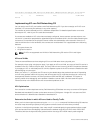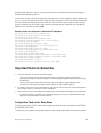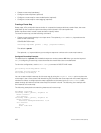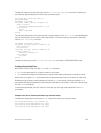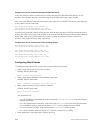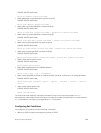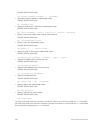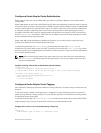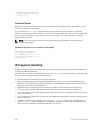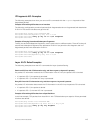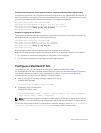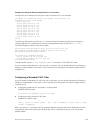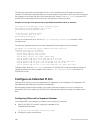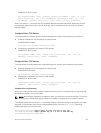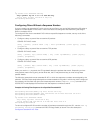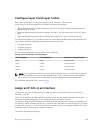
route-map torip permit 10
match route-type internal
set tag 34
!
Continue Clause
Normally, when a match is found, set clauses are executed, and the packet is then forwarded; no more
route-map modules are processed.
If you configure the continue command at the end of a module, the next module (or a specified
module) is processed even after a match is found. The following example shows a continue clause at the
end of a route-map module. In this example, if a match is found in the route-map “test” module 10,
module 30 is processed.
NOTE: If you configure the continue clause without specifying a module, the next sequential
module is processed.
Example of Using the continue Clause in a Route Map
!
route-map test permit 10
match commu comm-list1
set community 1:1 1:2 1:3
set as-path prepend 1 2 3 4 5
continue 30!
IP Fragment Handling
Dell Networking OS supports a configurable option to explicitly deny IP fragmented packets, particularly
second and subsequent packets.
It extends the existing ACL command syntax with the fragments keyword for all Layer 3 rules applicable
to all Layer protocols (permit/deny ip/tcp/udp/icmp).
• Both standard and extended ACLs support IP fragments.
• Second and subsequent fragments are allowed because a Layer 4 rule cannot be applied to these
fragments. If the packet is to be denied eventually, the first fragment would be denied and hence the
packet as a whole cannot be reassembled.
• Implementing the required rules uses a significant number of CAM entries per TCP/UDP entry.
• For IP ACL, Dell Networking OS always applies implicit deny. You do not have to configure it.
• For IP ACL, Dell Networking OS applies implicit permit for second and subsequent fragment just prior
to the implicit deny.
• If you configure an explicit deny, the second and subsequent fragments do not hit the implicit permit
rule for fragments.
• Loopback interfaces do not support ACLs using the IP fragment option. If you configure an ACL
with the fragments option and apply it to a Loopback interface, the command is accepted but the
ACL entries are not actually installed the offending rule in CAM.
112
Access Control Lists (ACLs)



